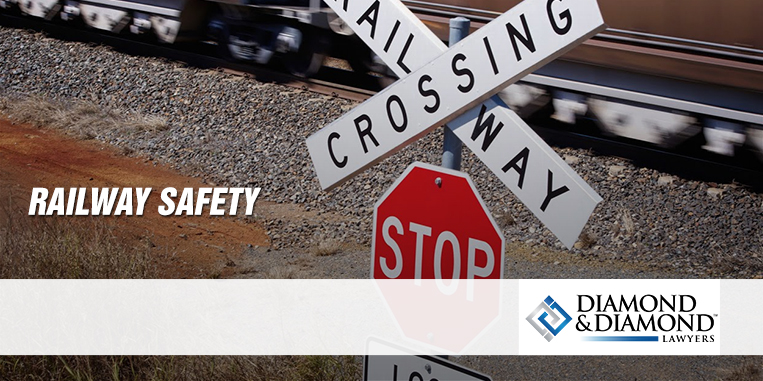Every year, nearly 100 people are killed, and another 100 are injured because of collisions with trains. Injuries like run-ins with trains are the leading cause of death and disability among youth and children in Canada. Collisions with trains can either be on foot or while traveling in a vehicle.
Railway Accident Causes and Statistics
Collisions are often the result of inattention or carelessness. Most fatal accidents also involved a motor vehicle driver that was disobeying the law in some way, either by disobeying traffic signals, failing to yield the right of way, or driving too fast. Inexperienced drivers and those driving under the influence also made up about one-third of fatalities as well.
Accidents can also be caused by inexperience or a lack of knowledge regarding railways safety as well. Males between the ages of 18 and 24 are the most likely to be injured or killed because of a train, but train accidents can happen at any age. It is important to start the learning process early so that children and young adults know and understand basic train safety and warnings.
The Differences Between Trains and Vehicles
Trains can travel up to 105 km/h and, due to their large size, they can take up to two minutes to come to a complete stop. The average train has roughly 150 cars, and if it is traveling 100 km/h, it needs approximately 2,500 m to stop. In contrast, the average car that is going 90 k/h only needs about 60 m to stop. Some people expect trains to be able to stop suddenly as if they are cars, but it is simply not possible based on the locomotive’s weight and speed.
Understanding Railway Warnings
You should never cross a railway track unless you are at a designated crossing point. Many crossing points have warnings and indications regarding when it is safe to cross, but other points on the track do not. You should also avoid crossing at private crossings as these are not meant for use by the public and are not maintained by public authorities.
There are four types of crossings:
- Passive. In this kind of intersection, there are no lights or bells that warn you of an oncoming train. You should be sure to look both ways down the track before crossing. Listen for train whistles as well. These crossings are often found in more rural or light traffic areas.
- Active with Lights and Bell. These crossings have flashing lights and a bell that will sounds if a train is coming. They are often found in more populated towns or cities. Be sure to avoid crossing until after the bell stops and the lights stop flashing.
- Active with Lights, Bell, and Gate. This crossing is the same as the former type, but there is also a gate that prevents drivers and pedestrians from crossing until after the train has passed. Do not go around or under the gate. Wait until the warnings have stopped and the gate is lifted to move through the intersection.
- Private Crossings. You will often see these types of crossings on industrial plant property or private roads. They sometimes appear during seasonal activity or during a construction project as well. If you must pass over these crossing, you should treat them as a passive crossing. However, you should also be extra diligent to look out for trains as the locomotives may not whistle as they would when approaching other types of intersections.
Injuries that result from train accidents can be extremely severe. You may have legal options after this type of accident. Call Diamond and Diamond’s 24/7 injury hotline for more information: 1-800-567-HURT.
